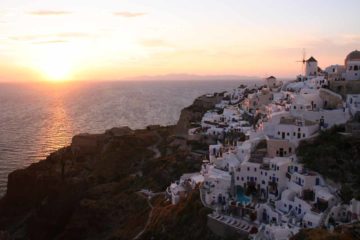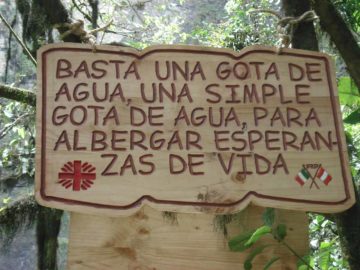About Nacimiento del Rio Cuervo
The Nacimiento del Rio Cuervo (or Río Cuervo with the accent) popularly referred to the waterfall or cascada that would typically flow over a series of bush-clad travertine walls and alcoves resulting in that kind of lacy and rivuleted waterfall that Julie liked to say would have “character”. Unfortunately as you can see from the photo at the top of this page, the only thing left about this waterfall were a few slivers of waterflow while the rest of it was pretty much exposed porous rock. That was a shame because this waterfall had all the potential of being one of Spain’s best, but it was clear from our visit that the reliability of its flow pretty much came down to how far removed we were from the last substantial rains (and how much water that had accumulated during that time).
Technically, the birth (nacimiento means birth in Spanish) of the Cuervo River was actually another 40 minutes walk further upstream from what you see pictured here. In other words, this waterfall should’ve been called the Cascada del Río Cuervo while the spring and cave further up the path should have been called the river’s birth. In any case, we’ve stuck by the popular notion of mixing this falls with the actual cave mouth where the river started to flow out of as I don’t think most people care about such technicalities.
Nevertheless, the karst characteristic of the underlying porous limestone was what gave rise to the travertine formations (like what we had seen at the falls) as well as caves, such as that which resulted in the birth of the river. Typically, we tend to think of karst scenery in places such as Southeast Asia (e.g Southern China and Thailand). Since the falls didn’t have very good flow, we didn’t bother lingering around longer than we needed to so we didn’t hike the extra 40 minutes in each direction to get up to the cave’s mouth at the birth of the Cuervo River. Maybe if we’re fortunate to return next time, we might have more time and will to do it under better conditions.
This was actually one of the easier waterfalls that we managed to visit in Spain. There was a well-defined boardwalk and trail from the well-signed and spacious car park (see directions below) that led a mere five minutes beneath thin but tall trees to the lookout yielding the views you see captured on this page. In addition to the well-shaded, well-defined and gentle grade of the boardwalks and steps, there was an even easier detour trail for strollers, wheelchairs, and toddlers. Indeed, it was clear that this was one of the more family-friendly waterfalling excursions in Spain.
Related Top 10 Lists
No Posts Found
Trip Planning Resources
Nearby Accommodations
This content is for members only. See Membership Options.Featured Images and Nearby Attractions
This content is for members only. See Membership Options.Visitor Comments:
Got something you'd like to share or say to keep the conversation going? Feel free to leave a comment below...No users have replied to the content on this page
Visitor Reviews of this Waterfall:
If you have a waterfall story or write-up that you'd like to share, feel free to click the button below and fill out the form...No users have submitted a write-up/review of this waterfall






